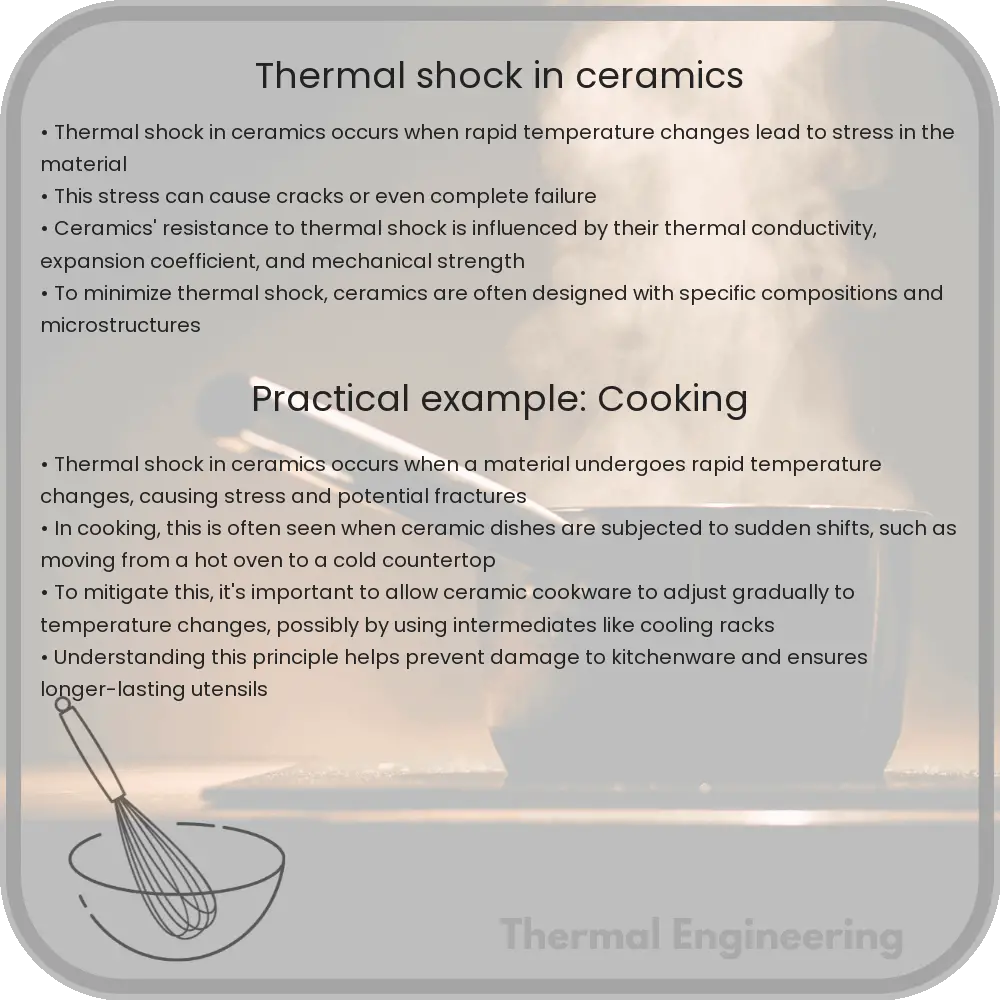Understand the phenomenon of thermal shock in ceramics, highlighting its impact and management in various industrial applications.

Understanding Thermal Shock in Ceramics
Thermal shock is a critical phenomenon that occurs when a material, specifically ceramics in this context, is subjected to a sudden change in temperature. This abrupt change can lead to stress within the material due to differing rates of expansion or contraction, often resulting in damage such as cracks, weakening, or complete failure of the material. Understanding thermal shock in ceramics is essential in materials science and engineering for designing components that can withstand such stresses in various applications, including aerospace, automotive, and culinary industries.
The Physics of Thermal Shock
The susceptibility of ceramics to thermal shock is a consequence of their physical properties. Ceramics are known for their high hardness and melting points, low conductivity, and brittle nature. When exposed to a rapid temperature change, different parts of a ceramic object may expand or contract at different rates. This uneven expansion can introduce stress within the object. If the stress exceeds the material’s strength, it results in the formation of cracks.
The severity of thermal shock can be quantified by considering the following factors:
- Thermal Conductivity (k): Materials with high thermal conductivity can quickly transfer heat across their volume, reducing temperature gradients and the resultant stress.
- Thermal Expansion Coefficient (α): Materials with a lower coefficient of thermal expansion will experience less expansion or contraction with temperature changes, thereby reducing induced stress.
- Elastic Modulus (E): A higher modulus indicates a stiffer material, which can be more prone to cracking under stress.
- Strength (σ): Higher mechanical strength in ceramics usually offers better resistance to cracking.
- Heat Capacity (Cp): A higher heat capacity means the material can absorb more heat energy without a significant rise in temperature, helping to mitigate rapid temperature changes.
The resistance to thermal shock, or thermal shock parameter (R), can be expressed using a simplified model:
\[ R = \frac{k * σ * C_p}{E * α^2} \]
This formula helps material scientists to compare the relative resistance to thermal shock among various ceramics and engineer solutions that either minimize these stresses or develop materials that can better withstand them.
Examples and Applications in Engineering
In practical applications, thermal shock resistance is a key consideration. For instance, ceramic tiles used on space shuttles are designed to withstand extreme temperature changes when the shuttle re-enters the Earth’s atmosphere from the cold of space. Similarly, in the automotive industry, parts like catalytic converters are made from ceramics capable of withstanding high temperature gradients as vehicle operating conditions change.
In the consumer sector, cookware made from ceramics is designed to handle the high heat of an oven directly after being in a much colder environment, such as a refrigerator. The specific types of ceramics used must have properties that can endure these quick transitions without damage.
Conclusion
Thermal shock in ceramics is a complex but fascinating subject that combines elements of physics and materials science. By understanding and measuring the factors that affect thermal shock, engineers and scientists can design ceramics that fulfill their roles in extreme conditions, making modern technological advances possible. From space exploration to everyday cooking, the manipulation and understanding of ceramic materials’ properties are crucial for developing safe and effective products.
This knowledge not only empowers industries but also fuels ongoing research and innovation within material sciences, pushing the boundaries of what materials can handle and how we can better equip them for the demanding environments they operate in.